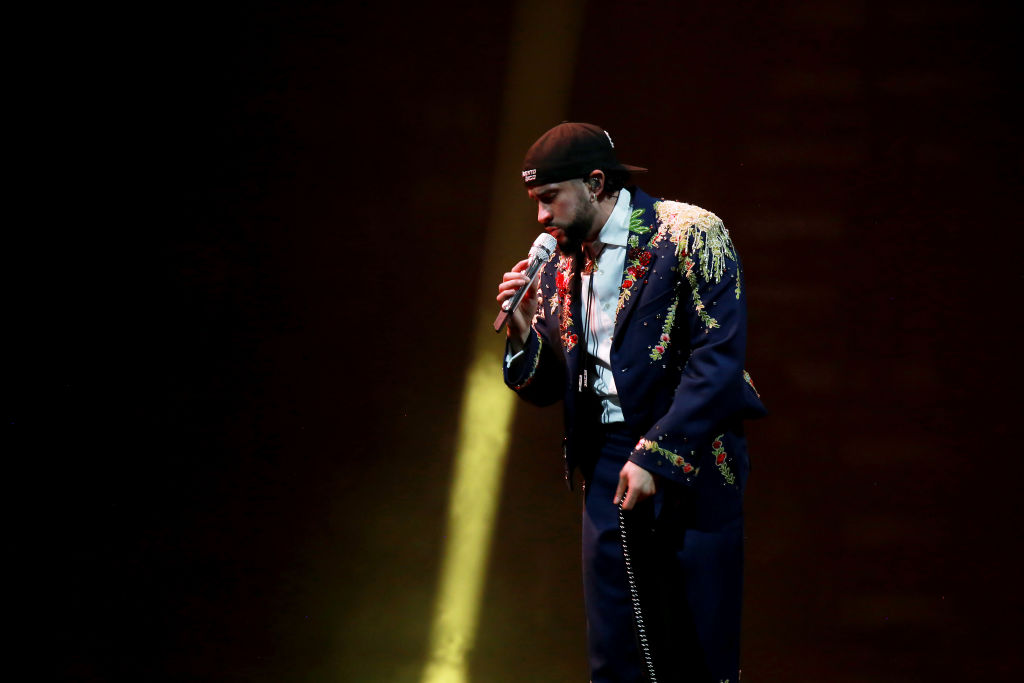
Why Bad Bunny Dropped the ‘NUEVAYoL’ Music Video on July 4th
The Puerto Rican artist chooses a key date in American culture to reframe the celebration as a tribute to Latin culture in the city
Puerto Rican global superstar Bad Bunny (Benito Antonio Martínez Ocasio) has officially premiered the music video for “NUEVAYoL”, the lead single from his latest album DeBÍ TiRAR MáS FOToS on July 4, 2025. The announcement came casually but purposefully—when asked by a fan on X (formerly Twitter) whether the video would drop on Independence Day, he responded with a simple: “sí.”
These are the possible reasons that might have led him to choose this date. For an artist as intentional as Bad Bunny, releasing “NUEVAYoL” on the Fourth of July carries layered meaning.
A Date Heavy With Symbolism: “NUEVAYoL” as Cultural Statement
The Fourth of July is typically a celebration of American independence—fireworks, flags, and freedom. But for Puerto Ricans, the day lands differently. The island remains a U.S. territory, governed by federal laws yet without full voting rights or representation in Congress. Independence Day in this context becomes an uncomfortable reminder of colonial contradictions.
By choosing this date, Bad Bunny isn’t just releasing a video—he’s reframing a national holiday through a Puerto Rican lens.
Musically, “NUEVAYoL” nods to “Un verano en Nueva York”, the iconic 1975 salsa anthem by El Gran Combo. That song chronicled the experiences of Puerto Ricans and other Latinos living in New York City—a city symbolic of both opportunity and struggle for the diaspora.
Bad Bunny’s version updates that legacy. “NUEVAYoL” is a trap-heavy, brash reimagination that pays tribute to the urban Latin identity shaped in neighborhoods like the Bronx and Harlem—while unapologetically asserting Boricua pride.
By aligning the video release with America’s most patriotic day, Bad Bunny reclaims the spotlight to tell his own story, and by extension, Puerto Rico’s.
Also, it’s important to remember that New York is one of the cities where Benito feels most at home in the USA. He confirmed this in a recent interview with Variety: “New York is somewhat of an extension of home for me. But obviously, nothing compares to the real deal. Some things you’ll only find in Puerto Rico.”
More Than Music: A Political Edge
Bad Bunny’s artistry has long carried a political edge. In interviews and lyrics, he’s criticized both U.S. and Spanish colonial rule, especially the way Puerto Rican history is whitewashed in schools.
“They don’t talk about all the gringo governors who stole from us, just like Spain did,” he said in a 2024 interview.
Songs like “LO QUE LE PASÓ A HAWAii” draw direct comparisons between Puerto Rico and Hawaii, highlighting shared histories of land privatization, militarization, and gentrification under U.S. governance.
And while he rarely gives traditional political endorsements, Bad Bunny has publicly expressed opposition to Puerto Rican statehood, which he views as a form of cultural assimilation and continued colonization.
July 4 as Cultural Resistance
Choosing July 4 for this release is a statement of resistance. It’s a way to redirect attention from the typical red-white-and-blue spectacle to something more grounded: the reality of colonial status, the resilience of Puerto Rican culture, and the vibrancy of its diaspora.
Bad Bunny by Greg Swales for Variety pic.twitter.com/jxXryNtUEj
— Kea (@jacquemusx) June 18, 2025
It’s also a reminder that for many marginalized communities, “freedom” is still conditional—and that “independence” remains an unresolved question for Puerto Rico.
The “NUEVAYoL” video drops on July 4, just one week before Bad Bunny begins his historic residency at the Coliseo de Puerto Rico José Miguel Agrelot, running from July 11 to September 14.
With this release, Bad Bunny isn’t just giving fans a music video—he’s issuing a cultural challenge, asking who gets to celebrate independence, and on whose terms.
Latin Music in the United States: Decline or Rise?
Latin music continues to grow as a dominant force in the United States, with artists like Karol G leading the charge. Her latest album Tropicoqueta was highlighted by a performance on The Tonight Show Starring Jimmy Fallon, featuring her English-language single, “Papasito.” This move echoes a long-standing strategy among Latin superstars—such as Shakira, Ricky Martin, and Enrique Iglesias—to cross over into the English-speaking market.
However, in today’s landscape, where stars like Bad Bunny and Peso Pluma have achieved global success primarily with Spanish-language music, the choice to incorporate English or Spanglish raises important questions about cultural identity and language assimilation in the industry.
While Latin music’s popularity reaches record heights—accounting for over 8% of audio streams in the U.S. in 2025 and generating over $1.4 billion in revenue in 2024—the scene faces new challenges.
Donald Trump’s anti-immigration policies have negatively impacted concert attendance among Latin audiences, especially in regions like California, leading to cancellations and decreased earnings. Despite this, the rise of Spanglish—a hybrid language spoken by millions of Latin Americans, especially younger generations—reflects a bicultural identity that artists increasingly embrace in their music. This cultural blending signals both a celebration of heritage and a nuanced negotiation of belonging within the U.S. market.